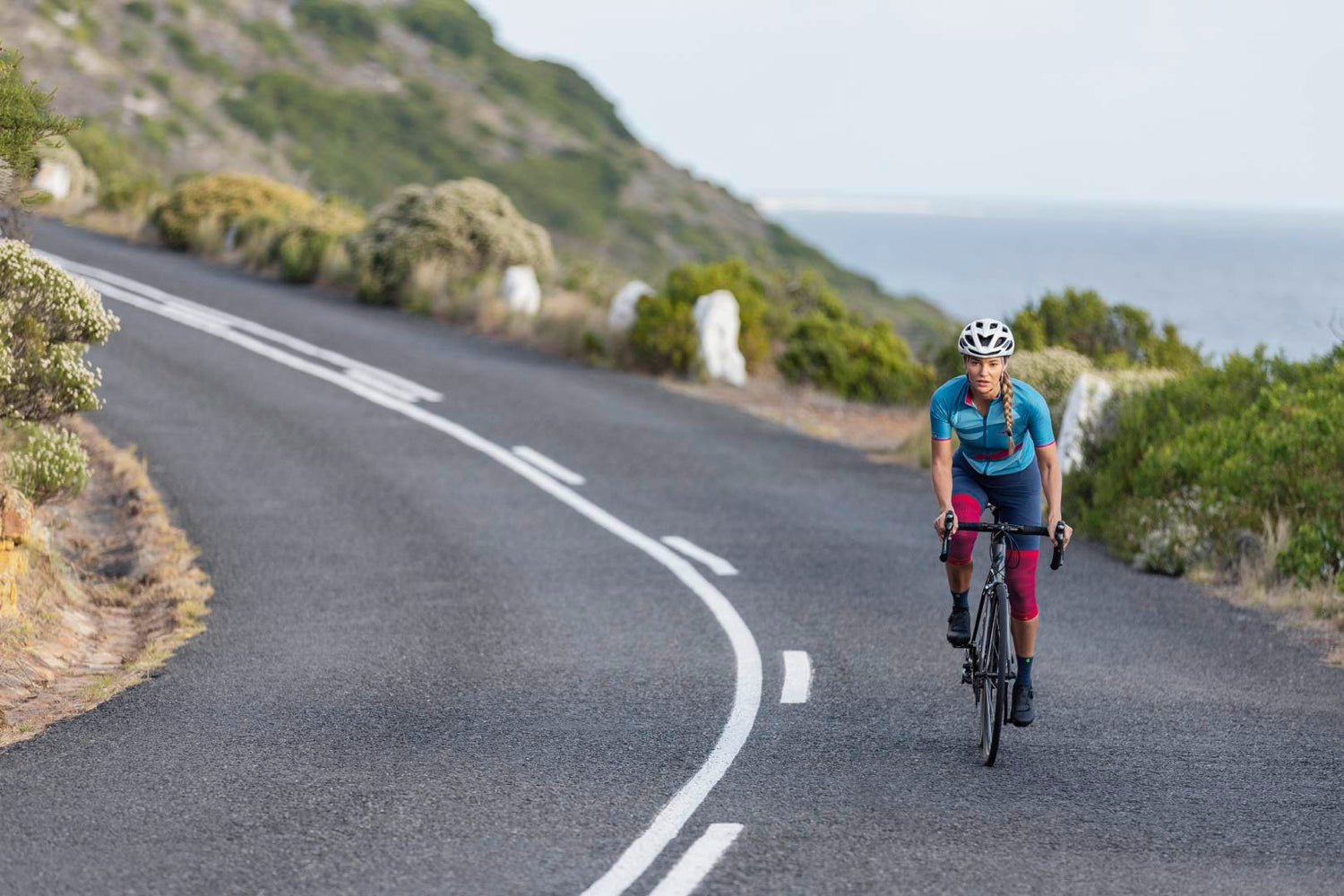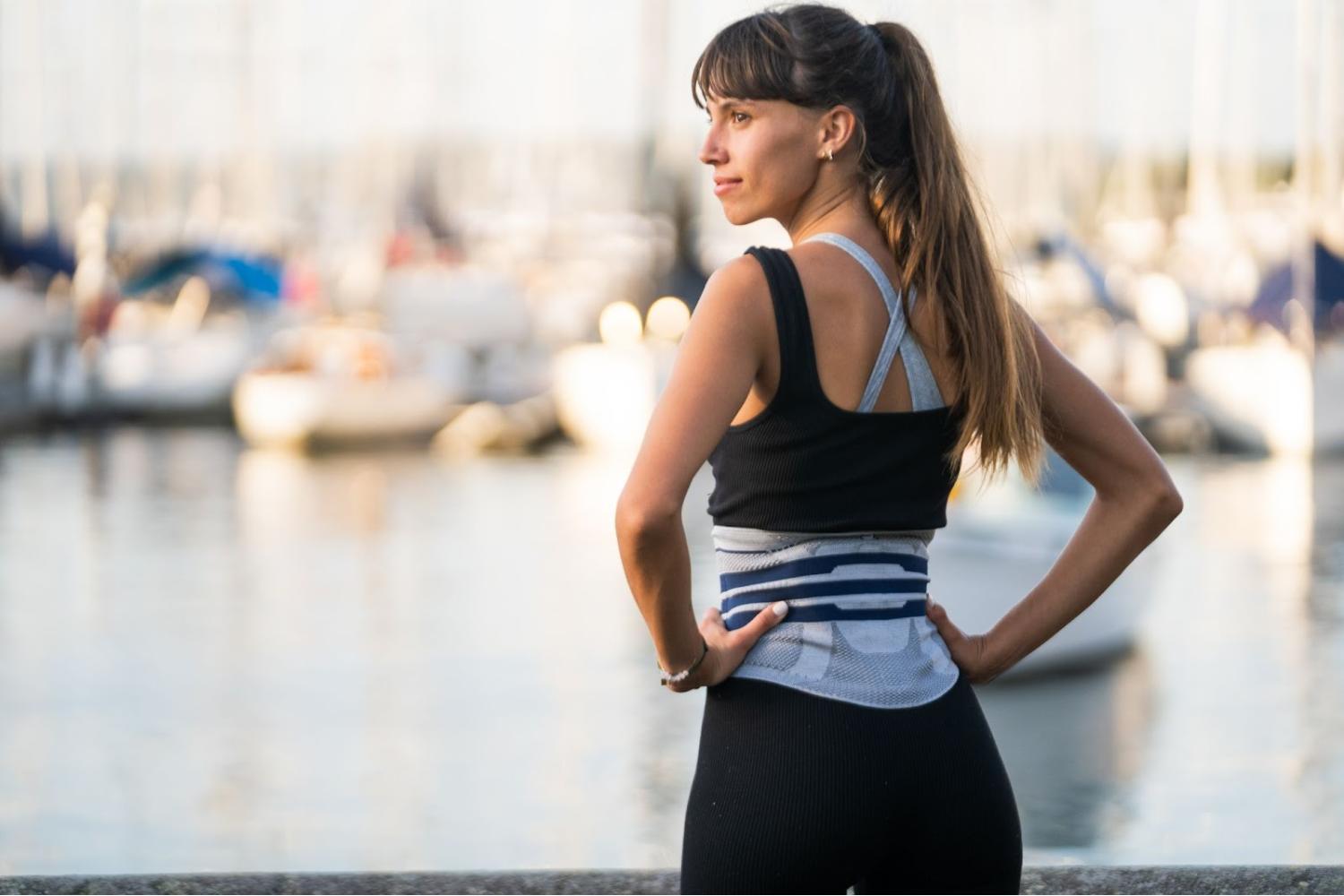Did Tour de France get you wondering how fast you can go? While every cyclist has a speed limit, there are ways to push the boundaries. From bike type to body positioning to muscle-activating compression sleeves, here are 7 ways to improve your cycling speed.
1. Boost your fitness
Research shows that strength training is key to improving cycling performance. After all, speed depends on power, and power depends on muscle strength and endurance. As cycling involves a lot of leg work, your legs should be your primary focus. And as muscles develop best with a mix of isometric, isotonic, and plyometric exercises, you should aim to add explosive, static, and controlled-movement exercises to your workout. To that end, try:
- Jump squats, burpees, box jumps. As we mentioned in our Running Stamina article, these plyometric exercises will improve speed and power output while reducing energy consumption.
- Isometric lunges, wall-sits, hamstring curls. These isometric exercises are great for working your motor units, which are the foundation of all bodily movements.
- Leg presses, deadlifts, sumo-squats. These isotonic exercises work the designated muscle groups through their entire range of motion, improving muscle strength, flexibility, and endurance.
While strong leg muscles are essential for building speed and endurance, you shouldn’t forget your core. Good core strength is vital for transferring force through the legs. So, add in a few plank variants and dead bugs.
2. Get an indoor bike to train on
Consistency is crucial to any kind of training. But as cycling is an outdoor activity, sticking with it in bad weather can be difficult. So, if you don’t already have one, get an indoor bike. It will keep you on track to building up your cycling speed.
3. Track your performance
Invest in a speedometer. It’ll help you track your maximum and average speeds so you know where to improve. And by displaying your speed while cycling, it will also motivate you to pedal a little harder.
4. Be more aerodynamic

When cycling at high speeds, you face a lot of wind resistance. In fact, increasing speed from 16 km/h to 32 means you’ll be up against 8x more air resistance! While muscle power helps get you through an obstacle like this, you can also stand to become a little more aerodynamic to cut through it.
First, work on your form. Ironically, ‘turtling’ is the best way to gain speed. Tour de France cyclists always have their seats up high and handles down low. The less your torso catches the wind, the better. They also keep their heads ducked down, pelvis tucked, back neutral, and elbows tucked in for minimum drag.
And second, you’ll need to dress in form-fitting cycling gear. Bike shorts or a fresh pair of fitness leggings are a good way to go. You’ll also want a moisture-wicking shirt with no flappy edges. A sleek cyclist silhouette may be harder to achieve in the winter chill. But you still have a few clothing options available (thermals, water and wind-resistant layers, thinner down jackets, et cetera).
5. Mind your bike
Some bikes are built for speed, while others are made for off-roading safety. If you want to cycle faster, you’ll need a road bike, as these come with a thinner frame and wheels. But, of course, you may need different sets of wheels for different cycling conditions. Thin wheels with little traction work great for smooth, dry roads, but bumpy trails and wet streets need wheels with some grip to keep you safe.
Additionally, keep your bike in good condition. While the drag your bike creates won’t be much compared to that produced by your body, you should still aim to minimise friction by keeping it clear of dirt and other debris. Some cycling publications also recommend going so far as lubricating your bike chains.
6. Get a cycling support

Sports Compression Knee Support
Pull on a compression sleeve or two. Our Sports Compression Knee Supports, for instance, will:
- Boost blood flow. Better circulation means your muscles get the oxygen and nutrients they need (and remove the waste they don’t) quicker, reducing the rate of fatigue.
- Improve proprioception. Proprioception is how well your muscles activate and how accurately your brain registers the positioning of your body. Quality compression products communicate with your nerves to activate your muscles faster and more efficiently, leading to better cycling speed and endurance.
- Improve muscle recovery. Their circulation-boosting and proprioceptive properties can also help your muscles bounce back quicker before your next training day. Do keep in mind, though, you shouldn’t neglect rest days, as these ensure your muscles heal after strenuous workouts and help restore glycogen levels (more on that later).
Not to mention, they’ll also help prevent injuries that can disrupt your cycling training (like Iliotibial band syndrome and patellofemoral pain syndrome.)
7. Maintain good cycling nutrition
First, good sports performance hinges on your calorie intake matching your energy output. If you eat fewer calories than you use, your body will respond by becoming temporarily slower and weaker - which isn’t conducive to improving or even maintaining cycling speed.
Second, eat a good mix of carbs, fats, and proteins. The latter builds muscle, while the former determine your energy levels. Carbs, in particular, help build and maintain your glycogen (glycogen being your body’s energy store). While research remains divided on carb-loading, some studies recommend eating 10-12 grams of carbohydrates per kilogram of body weight within 48 hours of your ride. You should also eat around 1.2 grams of carbs per kilo of body weight every 30 minutes for 3.5 hours after your ride.
And lastly, make sure you get enough vitamin D, as it's essential for muscle strength. You can get this from foods like fatty fish and soybeans, dietary supplements, and being in the sun for at least 15 minutes a day.
To sum up
Pedalling faster is all well and good, but if you want to sustainably improve your average cycling speed, you’ll need to take a few steps. For the best results, train consistently, wear quality compression, eat right, and keep your bike and yourself in great shape. Remember, improving sports performance is never quick or easy. But with the right habits and gear, one day, you could give the Tour de France cyclists a run for their money.
More supports to protect yourself and boost cycling performance: Cycling Braces & Straps
If you require assistance selecting the right product for your needs or wearing the brace, call us on 098015660 or contact us via live chat.
Do you have private health? Most private health extras will cover Bauerfeind Products. Check to see if yours is included. Bauerfeind Private Health Insurance Inquiry.
















